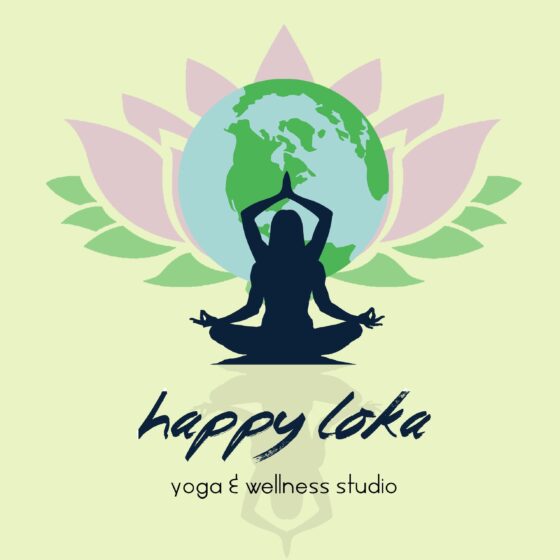Yoga’s effects on anxiety are profound, embracing a multi-layered approach that touches the physical, mental, and emotional realms of health. Delving deeper into how yoga relieves stress, we discovered that its practice includes a unique combination of asanas, breathing exercises, and mindful meditation aimed at creating harmony in the body and mind.
On a physical level, yoga poses are the main means of combating anxiety. The body often builds up tension in various muscle groups, leading to stiffness and tension. This can become a vicious cycle where physical discomfort increases the psychological experience of anxiety. By practicing asanas, one gently stretches, strengthens, and releases these areas of tension, effectively breaking the cycle. The fluid movements involved in series like Sun Salutations promote moving meditation, keeping the mind engaged in the moment while the body works to release accumulated stress.
Once the physical barriers are removed, yoga promotes deeper, fuller breathing, which is paramount to addressing the physiological aspects of anxiety. Pranayama, or controlled breathing, can calm the sympathetic nervous system, which is responsible for the body’s various responses to stress. Techniques such as ujjayi (ocean breath) or nadi shodhana (alternate nostril breathing) are specifically designed to focus the mind and bring it to a state of calm. This transition from shallow anxious breathing to more careful and relaxed breathing can significantly reduce anxiety levels.
 In addition to its immediate calming effects, yoga improves mindfulness, essentially teaching practitioners to cultivate a grounding presence in their daily lives. Mindfulness through yoga means cultivating an acute awareness of the body’s movements, the flow of the breath, and the narratives of the mind. In yoga practice, this can mean holding a difficult pose and observing where the mind wanders when faced with discomfort. This heightened form of self-awareness cultivated on the mat can then be transferred to situations off the mat, allowing individuals to approach anxiety-inducing scenarios with a more resilient and balanced mindset.
In addition to its immediate calming effects, yoga improves mindfulness, essentially teaching practitioners to cultivate a grounding presence in their daily lives. Mindfulness through yoga means cultivating an acute awareness of the body’s movements, the flow of the breath, and the narratives of the mind. In yoga practice, this can mean holding a difficult pose and observing where the mind wanders when faced with discomfort. This heightened form of self-awareness cultivated on the mat can then be transferred to situations off the mat, allowing individuals to approach anxiety-inducing scenarios with a more resilient and balanced mindset.
Yoga serves as a self-soothing technique that people can turn to when they feel overwhelmed. Certain poses, such as Balasana (Child’s Pose) or Savasana (Corpse Pose), are well known for their calming effects on the nervous system. Practicing these asanas can provide a haven from the chaos of anxiety, creating a physiological and mental state that counteracts the fight-or-flight response.
A Meditative Approach To Anxiety Management
The effectiveness of meditation in managing anxiety is both subtle and profound, affecting the landscape of the mind at its core. This practice allows a person to interact with their thought patterns in a way that brings about transformational change. Anxiety, often rooted in a web of uncontrollable thoughts and fears about past experiences or the uncertainty of the future, can be met with direct and calming countermeasures through meditation.
At the heart of meditation is the goal of cultivating a state of present-moment awareness, a practice that can dispel the temporary concerns that fuel anxiety. Through techniques such as focusing on the breath or on a chosen object or sound (a mantra), meditation teaches the mind to let go of the tendrils of anxiety that grab your attention. By redirecting attention to the present, meditators learn to observe their thoughts and feelings without getting caught up in them or overwhelmed by them.
This cultivated awareness, practiced over time, creates a baseline of calmness that can last even outside of meditation sessions. As practitioners spend more time in meditative states, they tend to notice a slowing down of the rapid thoughts that are characteristic of anxious states. This slowing down allows for more reflective and less reactive understanding, which is critical in managing anxiety in everyday life.
The repetition of meditation practices is known to promote a sense of internal order and predictability. This rhythm can be very calming, offering a structured haven for the mind amidst the often chaotic outside world. For people living with anxiety, regular meditation provides a safe retreat, an ongoing life tradition that can help stabilize mood and provide clarity of thought.
Meditation also develops what some describe as “witness” consciousness—the ability to step back and observe your thoughts and emotions without immediately identifying with or attaching to them. This psychological distance can reduce exposure to anxiety-provoking stimuli and reduce habitual thought patterns that tend to develop into anxiety. It’s the difference between saying, “I’m worried,” which involves full identification with the condition, and “I see that I feel anxious,” which allows you to stay grounded and choose a conscious response.
Neuroscientific research substantiates the mental shifts that occur during prolonged meditation. In addition to decreased amygdala reactivity, which is associated with anxiety, neuroimaging studies have shown increased gray matter concentrations in brain regions associated with self-awareness, empathy, and stress regulation. These structural changes in the brain highlight the profound ability of meditation to transform and reshape our mental processes and, as a result, our experience of anxiety.
Another aspect worth noting is the adaptability of meditation techniques, which can be adjusted to suit individual preferences and situations. From mindfulness meditation, which involves open observation of any internal or external stimuli, to mindfulness meditation, like Transcendental Meditation, the variety allows for flexibility in managing anxiety. This personalized approach ensures that people can find a method that really suits their needs and effectively contributes to their anxiety management strategy.
The Symbiosis of Yoga and Meditation
The relationship between yoga and meditation creates a harmonious combination that enhances their benefits, especially in the context of anxiety management. While yoga is typically associated with the physical body and meditation with the mind, the lines between these practices blur when it comes to their therapeutic effects. The symbiosis of these disciplines can strengthen the mind-body connection, offering a multifaceted toolkit for those dealing with stress and anxiety.
Yoga can be considered a preparatory stage for meditation, creating the initial conditions necessary for the mind to enter a meditative state. The physical practice of yoga, known as asana, helps release the physical tension that often accompanies anxiety by preparing the body for stillness. With less discomfort and distraction from bodily stresses, the practitioner can sit still and meditate with greater ease and concentration. Facilitating smooth, even breathing and calming the nervous system through yoga is the perfect precursor to a deep and peaceful meditative experience.
At the same time, the meditative aspects of yoga are designed to develop mindful awareness that flows smoothly into meditation. Poses, especially those held for long periods, encourage a meditative focus as the practitioner directs their awareness to align their body, sensations, and breath. This attention to the present moment builds the mindfulness skills that are at the heart of meditation, effectively blurring the line between moving practice and seated contemplation.
When the body is at rest during sitting meditation, it can reap all the benefits of mental clarity and concentration developed through physical practice. This is where the process ends, as the mindfulness and concentration honed in yoga improve the depth and quality of the meditation. In turn, the increased control of the mind and the calmness achieved through meditation can lead to a deeper and more introspective yoga practice. A person becomes more attentive to the subtleties of each asana, the nuances of breath control, and the enriching silence in each pose.
This symbiotic relationship not only eliminates anxiety in the short term but also creates resilience in the long term. Regular practice of yoga and meditation enhances the body’s response to relaxation, not stress. Because both practices require and cultivate discipline, consistency, and patience, they also promote psychological virtues such as perseverance and resilience in the face of life’s stresses.
In today’s wellness communities, yoga and meditation are often combined to create comprehensive classes and retreats aimed at reducing stress and managing anxiety. This integration emphasizes the recognition of how intertwined these practices are and the enhanced effect they can have on human well-being when practiced together. Many yoga sessions end with a period of meditation that smoothly transitions from a dynamic flow of poses to the silence and peace of a contemplative rest.
